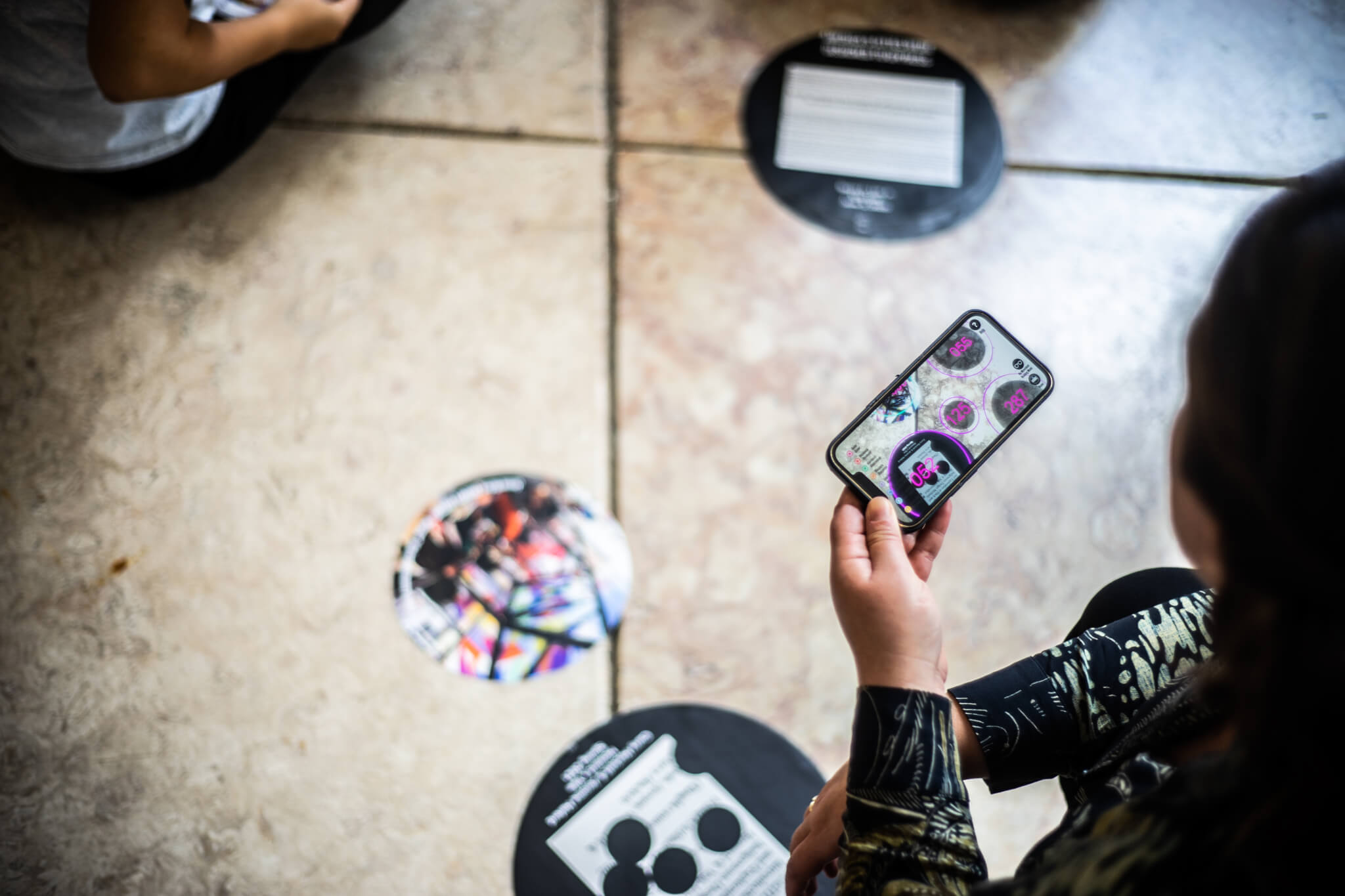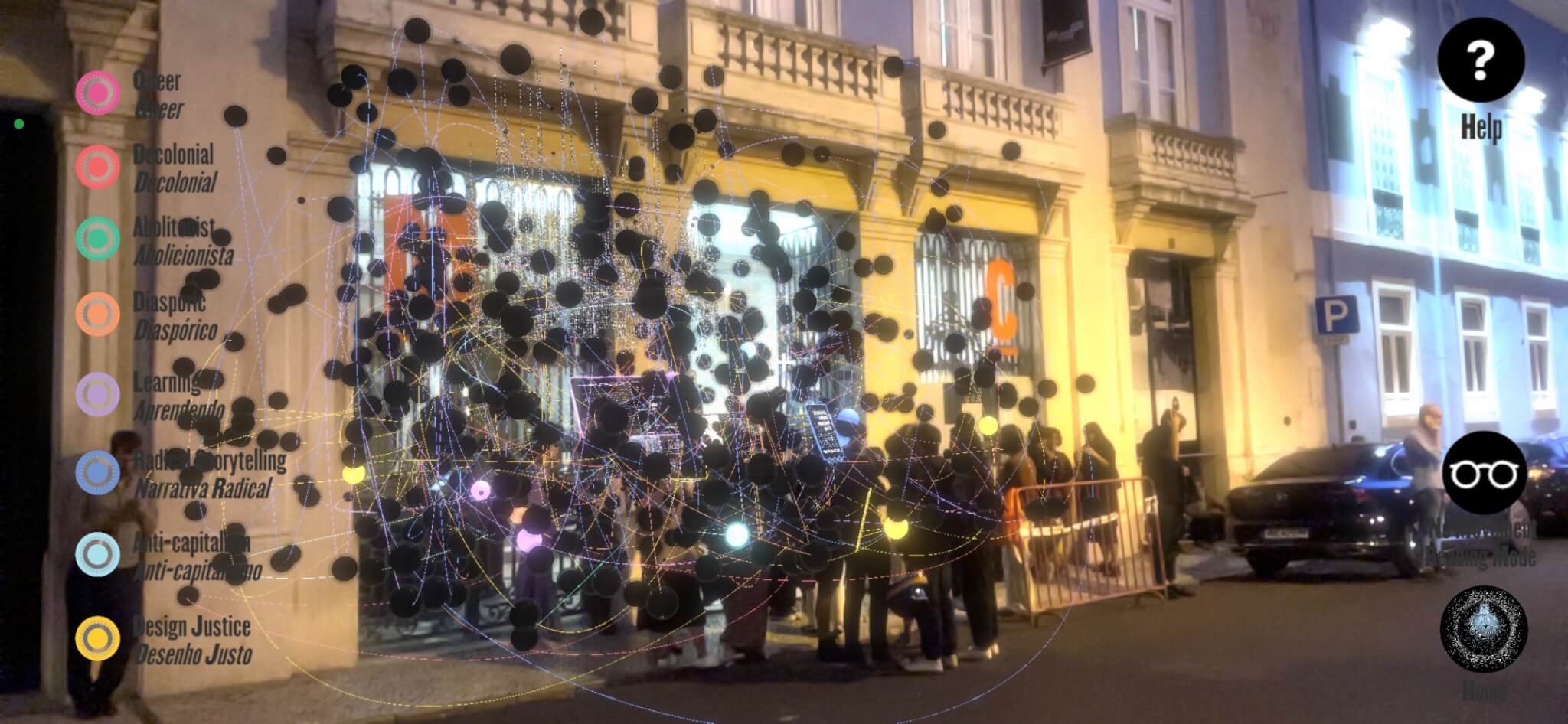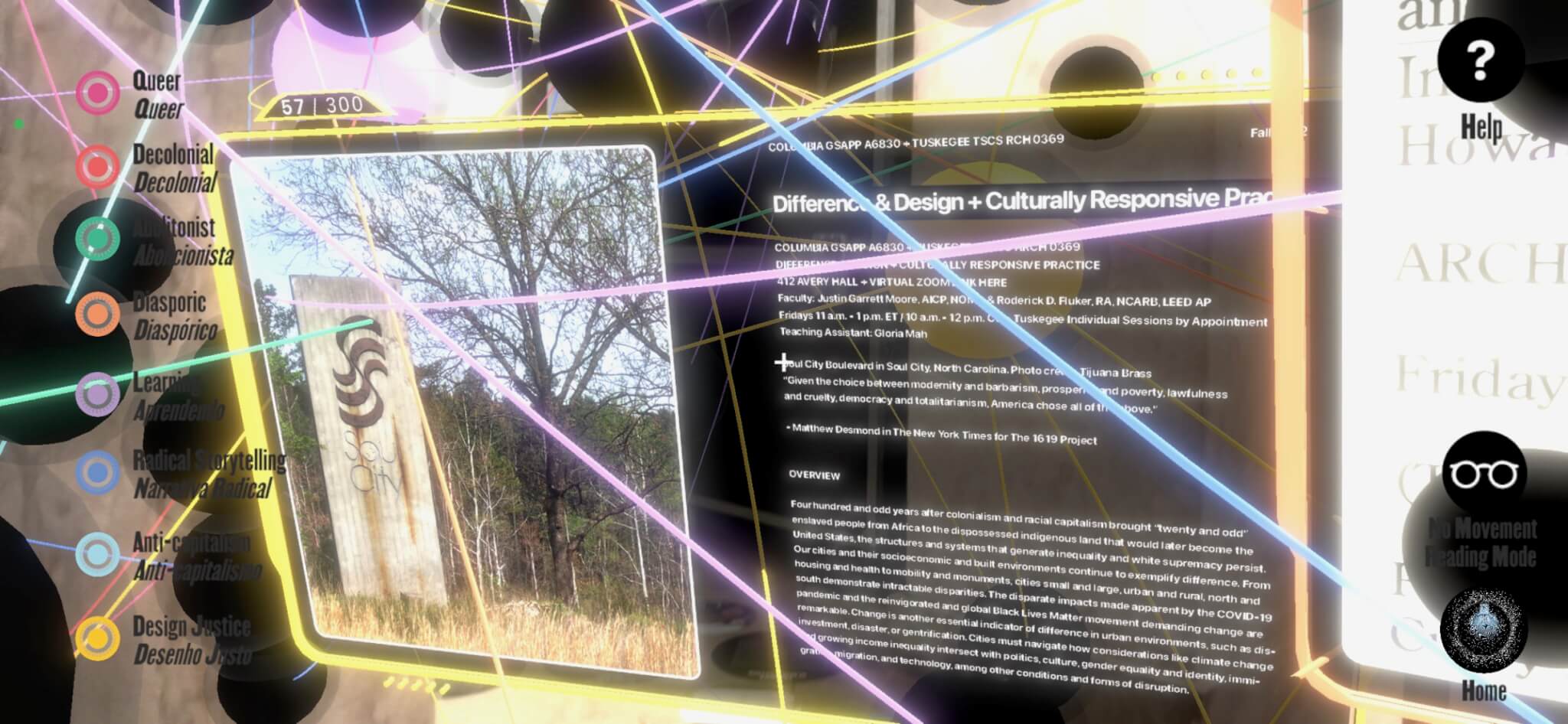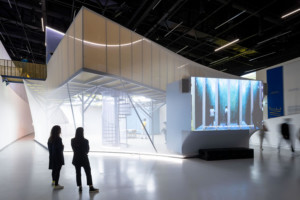DMUxLisbon
Multiplicity
Museu Nacional de Arte Contempôrea do Chiado
Rua Serpa Pinto, 4 | Rua Capelo, 13
1200-444
Lisbon
Open through January 8, 2023
While some portions of Terra, the 2022 Lisbon Architecture Triennale, are now closed, others remain on view. Multiplicity, curated by Tau Tavengwa and Vyjayanthi Rao, is accessible through early 2023, and among its contents, one piece by Dark Matter U (DMU) stands out for its siting and interactivity.
Realized by DMU, a collective of antiracist architecture educators and designers, DMUxLisbon is an immersive installation staged in the lobby of the Museu Nacional de Arte Contempôrea do Chiado. In person, its constellation of dots connects DMU members, works, and methods, and showcases the organization’s many participants and identities. Among the entries are projects from DMU-led studios, article abstracts, diagrams, exhibition summaries, texts, publications, Zoom screenshots, and more. The radial matrix is augmented by an augmented reality app, which makes linkages on the screen of a device. The overlay demonstrates that the knowledge created by this network, as part of the work of an ever-evolving collective, is in flux.


In its own description, DMU is a “counter institutional network of educators, researchers, and practitioners dedicated to anti-racist design education and outcomes, based in Turtle Island (United States and Canada) with a growing international membership.” The group, a network of activists-academics, emerged in the summer of 2020 in the unrest that followed the murders of George Floyd, Ahmaud Arbery, and Breonna Taylor. This political climate inspired the group’s formation, but the isolation of the early months of the pandemic, inspired its distributed operations. At first, most of the work took place via Google Docs and through open meetings held on Zoom.
“Many of us were using a lot of remote collaboration tools that I don’t think other folks had thought of bringing together for a counter-institutional project,” Jerome Haferd, a New York–based architecture educator and cofounder of Brandt : Haferd, said in conversation with Rao, who teaches at the Bernard & Anne Spitzer School of Architecture at the City College of New York. In addition to DMU network contributors and collaborators, the core team for the installation includes Bz Zhang, christin hu, Cory Henry, Garnette Cadogan, Haferd, Maria Villalobos, Shawhin Roudbari, Sophie Weston Chien, Tonia Sing Chi, and Victor Zagabe. The augmented reality curation and design was led by George Guida and Tatjana Crossley (ArchiTAG) and Garvin Goepel (Augmented Architecture), with AR coordination by Victor Zagabe.

DMU works to create new forms of knowledge and knowledge production, new forms of institutions and power, new forms of collectivity and practice, new forms of community and culture, and new forms of design. A statement on DMU’s website clearly identifies its goals:
We cannot survive and thrive without immediate change toward an anti-racist model of design education and practice. Existing systems have not been able to transform away from centering and advancing whiteness, through their reliance on an implied dominant and racialized subject and audience. The impacts of that centering are widespread and can be felt in the inequities that global extraction, racial capitalism, and colonialism have created. The earth and the majority of its people have suffered tremendous harm as a result. Collective liberation cannot only occur within the confines of individual institutions—[DMU] is founded to work inside and outside of existing systems to challenge, inform, and reshape our present world toward a better future.
DMU’s roster lists 176 members currently, including regular AN contributor Anjulie Rao. Many are educators who teach university-level studios and courses that advance antiracist ideas and practices.


At the opening for Multiplicity, attendees were encouraged to engage with the constellation, and crowds spilled out onto the sidewalk. Terms like queer, decolonial, abolitionist, diasporic, learning, radical storytelling, anti-capitalism, and design justice organize the color-coded linkages between entries in the database. Like the attendees, the dots themselves also exited the museum and could be found nearby on the streets of Lisbon.

Over the course of the pandemic, topics like identity, labor, extraction, collaboration, racial capitalism, and the climate crisis (among others) have become increasingly centered in conversations about architecture. DMU’s members are, in part, responsible for accelerating this shift in professional concern, along with a host of other voices.
DMU is starting to be recognized for its collective efforts. Last month, the group received a $100,000 Visionary Small Business grant as part of the #BlackVisionaries program, presented by Instagram in partnership with the Brooklyn Museum in an effort to “uplift, center, and invest in Black voices and organizations working in art and design.” According to Instagram’s announcement, “grant recipients were selected from nearly 2,000 applications by a committee of Black artists and designers, led by Antwaun Sargent, including Elle Decor Editor-in-Chief Asad Syrkett, Academy Award-winning costume designer Ruth E. Carter, and Director of Metaverse Design at Meta, Ian Spalter.”
View this post on Instagram
If you’re not able to see the DMUxLisbon in person, you can experience it virtually using a smartphone via this dedicated website. Additionally, the installation’s website hosts a particle archive, which indexes each star in the constellation.











